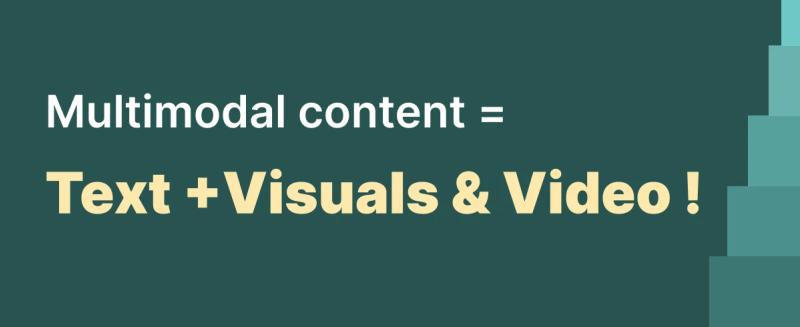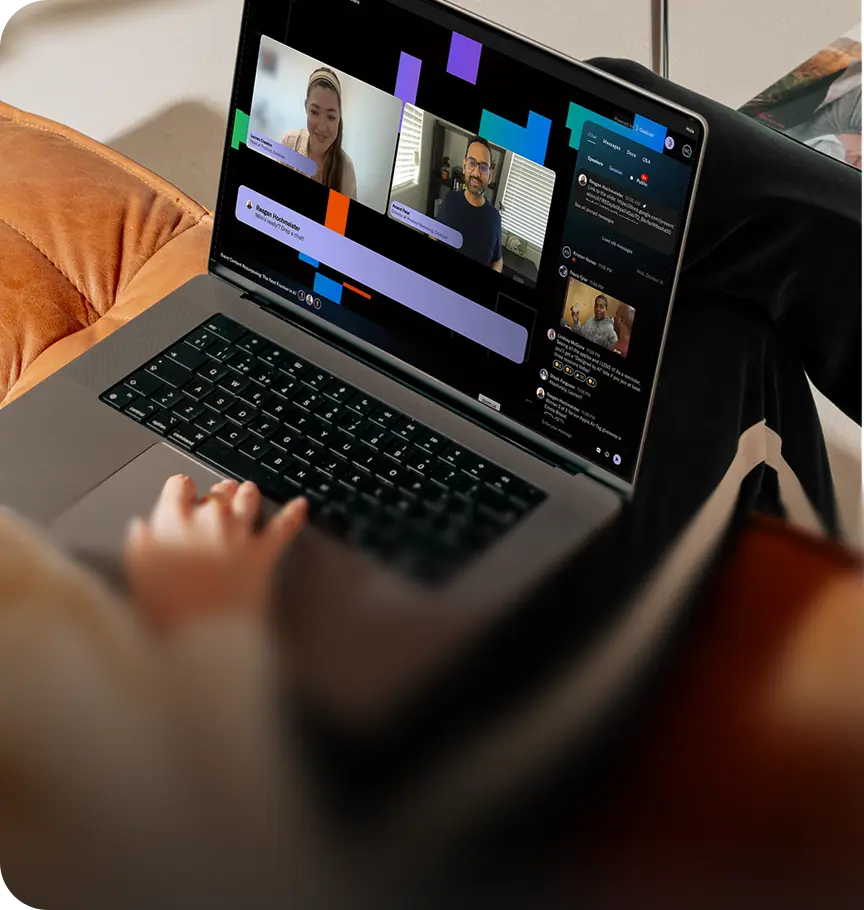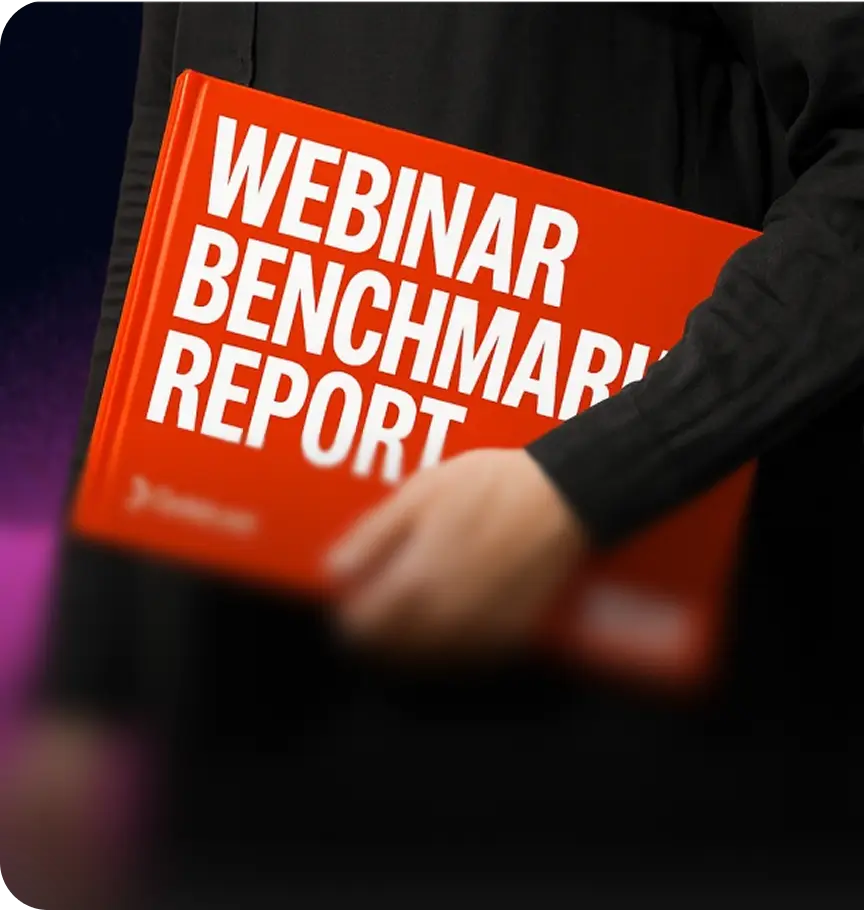Why Multimodal is the Best Type of Content Marketing

Table of Contents
Maximize Your Marketing ROI
Join 10,000 other marketers already getting the best tips on running engaging events that boost pipeline and create raving fans.
If reading about bento boxes in a blog about AI and video marketing was not on your bingo card this year, all we can say is: Expect the unexpected!
During our AI Alliance Summit, Kelly Cheng, our Head of Marketing, interviewed Amrita Mathur VP of Marketing at Clickup. Prior to her current role, Amrita grew Superside from zero to 45 million in annual revenue in under four years and has established herself as a leader in GTM strategy and B2B product marketing.
Amrita had a lot of unique things to say, from (of course) likening Japanese-style lunch boxes to the content we create to revealing how ClickUp's self-sufficiency focus pushes people to find the right AI tools.
Read on for:
- What is multimodal content?
- Multimodal content marketing is like making bento boxes 🍱
- A three-pronged approach to scaling with AI
- Figure your people out first, and then figure out how AI tools can help
- Start small with multimodal content
- AI Tools Frequently Asked Questions (FAQs)
PS - If you're more of a visual/audio learner, we've got the video on demand for you!
What is multimodal content?
You may have heard us talk about multimodal content before, but if you haven't, here's a little primer. Multimodal content is content that offers a combo of text and visual images or video, blending the two.

Like this blog post! As you scroll, you'll see there are video snippets sprinkled throughout to break up the text and give you a different way to consume the content.
Why multimodal content, you ask? Well, we know that people prefer things this way. Pure text just isn't as appealing as text with video and images mixed in. That's when people really get intrigued and stick around to learn more.
If you still need convincing, think about the way you consume things. If you like watching YouTube Shorts or you've ever lost track of time scrolling through TikTok or Instagram Reels, you know firsthand that video is engaging. It hooks your attention in a way that a blog post on its own might not.
Multimodal content marketing is like making bento boxes 🍱
Despite how awesome video is, Amrita points out that the move here isn't to go all in on video, and video only. Instead, think of your content marketing strategy like crafting the perfect bento box.
Proportions are everything, and it wouldn't be a fun meal if you didn't throw some variety in the mix! Maybe that means you've got some written content, and then you throw in a side of rich graphics, and you make sure to include some quality video to explain a complex topic.
Sounds appetizing, right?
Amrita experimented a lot with this strategy at Superside, which was a small, unknown startup when she joined. She was the first marketing hire, and she was forced to start from scratch in an already-crowded space.
It turns out multimodal content—or what Amrita calls "enriched content"—was a great way to stand out from the pack. Take a look at this example to see what we mean!
As you can see, you've got motion graphics, text, dynamic ways to click through the text and land elsewhere, and then embedded audio and video throughout the post. It's a very engaging, video-forward experience!
This content performed well for many reasons: the subject matter, the layout, the level of video content, and the value it ultimately delivered for readers. Superside found that visitors kept returning to the page over and over, wanting to explore and learn more. They also got signals that the content was making its rounds within other companies, which is what they set out to do.
Amrita was careful never to think of the content as "done" but, instead, as a living and breathing thing that would need to be updated and maintained. Anytime Superside produced something else that was related, they would go back to the original post and update it—a practice that continues to this day.
A three-pronged approach to scaling with AI
ClickUp is currently employing a three-pronged approach to leverage AI to scale its content marketing strategy.
Here's what that looks like:
- Use AI to help produce—or at least brainstorm—content. This is pretty table stakes at this point for most marketers.
- Use AI to quickly find the best pieces of content to cut away, particularly in longform video content. That means when ClickUp does a webinar on the Goldcast platform, a tool like Goldcast Content Lab can help find the best clips.
- Find how AI can enable individual contributors on the team to be self-sufficient. This is a key part of scaling—using AI to get rid of the backlogs that plague most creative teams.
For the third item, the goal is to use AI to remove as many dependencies as possible. If you've ever been in a position where your campaign is totally derailed because it's dependent on other things that you can't control, you're not self-sufficient. You're also not working speedily, which is something you have to be doing in today's market.
At ClickUp, the content managers are the ones responsible for each piece of content and its distribution strategy. Now, because of Content Lab, it's easy for them to go in and find the best clips, edit them, and get them ready to post. All of this happens right after the webinar or livestream ends. Then ClickUp sends out the recording, takes the cuts, schedules them for social, and keeps the distribution flywheel alive and spinning.
No more waiting on someone to rewatch the video, find the clips, and then asking a video editor to shape it up. No more pinging a social media manager to ask them to write the post and send it back to you so you can review. In other words, AI has eliminated all of the dependencies on other creative teams!
Figure your people out first, and then figure out how AI tools can help
A company like ClickUp doesn't really need a mandate to explore AI because they use AI in their own products. They've also built a culture that requires self-sufficiency and prioritizes it above all else. The goal is to eliminate as many dependencies as possible, and ClickUp has gone so far as ditching the traditional KPI and OKR systems in favor of a P0, P1 priority level system.
When ClickUp does priority planning for every team, they are aware of each priority and how many dependencies it has. If something has a lot of dependencies, everyone discusses that in the planning phase and brainstorms how that number can be reduced. Ideally, each item is dependent, at most, on just one other person or team.
When it comes to AI tooling, that self-sufficient culture carries over. If a person is responsible for something, they are responsible for the entire thing. That means if a content manager owns a virtual summit, they're thinking about speakers, dates, gifting, topics, the actual content pieces, marketing, distribution, and so on. The entire workflow belongs to one person, which is very different from the way other companies are structured.
This ownership is a great way to force people to figure out AI tools and encourage adoption. People will naturally lean toward tools that are relatively straightforward to use that also solve their pain points, and then others on the team can learn from them.
Start small with multimodal content
If you're feeling intimidated by Amrita's successful multimodal example from earlier, don't be! The best thing to do is to start small with multimodal content, and think about what's feasible for you right now. What's the minimum viable product (MVP) you can create to align with this goal?
Maybe you begin with a goal to take each event and repurpose it into a handful of social posts featuring a video clip. Or perhaps you decide to craft a blog post after each event using an AI tool, and you'll embed at least one video in every blog.
The thing is, you'll get better as you go, but you have to start somewhere. The faster you start acquainting yourself with AI tools (see the FAQs for some suggestions!), the better position you're in to scale your multimodal content strategy. Why not try your hand at it today?
You can use the AI-powered Goldcast Content Lab to do all of these things within minutes of your event or live stream ending—and you can try it for free! Click below to learn more and sign up for your free two-week trial. And be sure to sign up for the AI Marketing Alliance, where you can learn about AI with other B2B marketing leaders!
AI Tools Frequently Asked Questions (FAQs)
Q: What are some good AI tools to try?
A: Here are Amrita's recs:
- Goldcast Content Lab: AI-powered campaign creation that starts with you uploading your video content.
- Riverside: A platform that allows you to record quality audio and video content and then apply AI tools to edit and refine it.
- Descript: An AI-powered video and podcast editor.
- Suno: A gen AI music creation program that lets you create realistic songs.
- Vidyard: You can record yourself and then create different messages with your mouth moving accordingly! This can be useful for salespeople sending different pitches out.
Q: How does the ClickUp marketing team use the ClickUp AI product?
A: The marketing team uses the ClickUp AI product in two main ways. One is for content creation and brainstorming, which is an out-of-the-box piece ClickUp has enabled. You could use something like ChatGPT for this as well.
The other way is for campaign planning and project management. Amrita might go to ClickUp and tell the AI tool she's launching a campaign for the company's product manager and developer ICPs. She'll share the anchor piece of content she wants to write. Then, she'll ask the tool to build her a campaign.
The campaign will include all necessary steps, timelines, and people to assign things out to. The AI learns from Amrita's past campaigns and incorporates that into its answers. This draft gives Amrita a great idea of how much time to allot for each step and helps her plan for what resources she'll need along the way.
Freeing up the time she would have spent on this operational component gives Amrita back time she can spend on creating content or being more creative on the more specific GTM pieces of her process. That's the magic of AI!
Transform Your Video Marketing with AI
Stay In Touch
Platform
Resources
© 2025 Copyright Goldcast, Inc. All rights reserved.





 Upcoming Events
Upcoming Events Event Series
Event Series On-Demand Events
On-Demand Events

